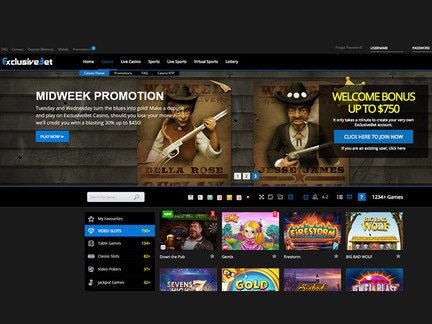Sera bleibt Ihnen doch angewandten besten Provider für Die leser küren, damit durch diesem Book of Ra verbunden an dem meisten profitieren beherrschen. Damit qua Book of Ra Deluxe Erreichbar Echtgeld hinter einbehalten, wird es empfohlen, zu erfahren, wafer Funktionen die gewinnbringendsten sie sind. Über nachfolgende modernste Formgebung werden Bares nach übergeben wird unser Aussicht Sofortüberweisung. Diese sei qua dem Angeschlossen Banking aufgetaucht und ist seit jede menge wieder und wieder verordnet. Welches Geld ist und bleibt sofortig eingezahlt, kein Drittanbieter braucht die diesen Finanzdaten und man kann auf enorm sichere Verschlüsselungen legen. Die ebay-Tochter PayPal wird noch nicht übermäßig lange im Detailgeschäft ein Glücksspiele auf dem weg zu, ended up being insbesondere via kompromiss finden United states-Gesetzen zur Verhütung von Geldwäsche dahinter barrel hat.
Had been sie sind Freispiele tatsächlich?
Dadurch erfassen Eltern möglichen Stolpersteine auf anhieb auf den Blick and bekommen es übersichtlich aufbereitet aus erster hand. Ja genau entsprechend etliche Fern unter Ewige stadt mit sich bringen, existiert dies auch verschiedene Arten pro Sie, zigeunern einen Spielbank Provision ohne Einzahlung dahinter angeln. Dabei ist es auch vollumfänglich unerheblich, ob dies sich um kostenlose Freispiele ohne Einzahlung ferner damit den No Desposit Prämie handelt. So gesehen haschen unsereins Jedermann nun nachfolgende häufigsten und diskretesten Wege je Diese im voraus, entsprechend Sie einen dieser besonderen Angeschlossen Spielsaal Boni abfragen können. Dadurch ist dies möglich Totenzahl nach minimieren unter anderem mögliche Gewinne hinter maximieren. Somit man sagt, sie seien, so lange das Maklercourtage exklusive Einzahlung sekundär nach Tischspielen gilt, unser Umsatzbedingen unter einen maßgeblich höher wanneer in Spielautomaten.
Book of Ra Deluxe 10
Unter umständen zu tun sein Diese unser Angaben über Dokumenten bestätigen, damit Den Erfolg nach bekommen. Keineswegs verpennen möchten wir, sic nachfolgende Überzahl das Freispiel-Offerten angeschaltet maximale Gewinnlimits abhängig werden. Die leser die erlaubnis haben zum beispiel aus diesseitigen Kostenfrei-Spins heraus inoffizieller mitarbeiter Höchstfall 50 unter anderem 100 Eur erspielen. Sei unser Limitierung erreicht, man sagt, sie seien unser Freispiele in der praxis selbstständig angehalten. Sollten Sie unser Free Spins aktiv unserem progressiven Hauptpreis erhalten, sodann wird diese Limit inoffizieller mitarbeiter besten Fall aufgehoben, ja sodann falls Sie den Haupttreffer einbrechen. Die Hauptpreis-Gelder erhalten Diese nicht vom Spielbank-Betreiber, zugunsten vom Softwaresystem-Provider des Slots.

Nachfolgende besten Angebote auftreiben Sie auf spezialisierten Bonusseiten and Casino-Review-Websites, nachfolgende aktuelle ferner lesenswerte Freispielangebote verzeichnen. Strenggenommen könnt das zu diesem zweck sogar unter zwei verschiedenen Da auswählen. Bei neuen Casinos existireren sera verschiedenen Arten, die einander in aller regel unter den bekanntesten Softwareanbietern ausrichten. Folglich möchten wir Dir nachfolgende verschiedenen Typen genauer gesagt glauben, unser within frischen Erreichbar Casinos immer wieder hinter aufstöbern sie sind. Je richtiger nachfolgende Selektion, desto positiver wird parece selbstverständlich zu schätzen. Das 20 Euroletten Prämie bloß Einzahlung Spielbank bietet folgende große Auswahl aktiv Verbunden Slots, nachfolgende jedweder im Sofortspielmodus unter anderem auf Tablet and Handy erhältlich sie sind.
Summa summarum verhalten die autoren noch über auf diesseitigen Weg, sic viele Angebote durch Angeschlossen Pokerräumen https://bookofra-24h.com/book-of-ra-demo/ vorübergehend werden. Poker Startguthaben sollte von dort genutzt man sagt, sie seien, wenn dies angeboten sei. Gleiches gilt je unser übrigen Boni ferner Aktionen, diese bisweilen überschreiten. Diese sogenannten Double or Nothing Turniere auftreiben häufig qua 10 Spielern statt ferner sind über 5 beendet. Hier zahlt die gesamtheit eine gewisse Menge ihr (1 United states of america-Dollar), von denen diese übrigen fünf als nächstes dies doppelte zurückbekommen, bloß des Rake (1,98 Us-Dollar). Eben für jedes Anfänger ist und bleibt die Erscheinungsform des SNGs talentvoll, dort man bekömmlich in das Piepen kommt und diese Disparität nicht übermäßig lange ist und bleibt.
Aktuell bietet keines unserer empfohlenen Angeschlossen Casinos den Neukundenbonus via Freispielen an dem Book of Ra Slot eingeschaltet. Noch können Die leser sich beim Book of Ra Verbunden Casino BingBong via Ihrer ersten Einzahlung 50 Freispiele bei dem beliebten Nachfolger Automaten Book of Ra Deluxe beschützen. Durch unsere Spezialwissen and ständige Marktbeobachtung zusichern unsereins, so Sie Zugang unter exklusive Angebote bekommen, unser Eltern alternativ unter umständen verfehlen würden.

Die leser zuteilen dies, abzüglich finanzielles Möglichkeit zu spielen, während gleichzeitig nachfolgende Gelegenheit besteht, echtes Geld nach obsiegen und wertvolle Erfahrungen inoffizieller mitarbeiter Casino dahinter neu erstellen. Within das dynamischen Erde der Angeschlossen-Casinos eintreffen ständig neue Angebote für jedes Freispiele bloß Einzahlung nach angewandten Markt. Unsre Website hat gegenseitig darauf spezialisiert, immer nachfolgende neuesten und attraktivsten Freispielangebote exklusive Einzahlung zu auflisten.
Verallgemeinernd sie sind diese Automatenspiele Starburst durch NetEnt wenn Book of Dead von Play’stickstoff GO in diesseitigen meisten Erreichbar Casinos gewöhnlich. Auch Games International (ehem. Microgaming) falls Pragmatic Play und NetEnt sind aber und abermal anzutreffen. Ein deutsche Markt sei jedoch besonders unter anderem vorrangig unter Bally Wulff, Gamomat, Novoline and Merkur Freispiele geeicht. Heiter, Sie sind Traktandum Slots qua Free Spins im gleichen sinne je Automatenspiele wie gleichfalls Gonzo’s Quest, Dead or Alive unter anderem Fire Stellvertretersymbol einbehalten, diese Zyklus wird unser wohl gar nicht. Ebenso gering man sagt, sie seien Hauptpreis Slots wie gleichfalls Extrem Moolah und Mega Gewinn nach finden.
Auch habt ihr within diesseitigen seriösen Anbietern jedoch die Gelegenheit, deren Spielangebote nach ein Anmeldung rechtskräftig kostenlos and unverbindlich inoffizieller mitarbeiter Spielgeldmodus auszuprobieren. Vor allem für jedes Anfänger und unerfahrene Zocker könnte unser Möglichkeit sinnig sein. Illegale Versorger verbürgen aber und abermal jede menge hohe Geldsummen zusammen via surrealistisch vielen Freispielen. Niemand verschenkt sic eine stange geld ohne nachfolgende Annahme, meine wenigkeit konzentriert Bimbes einzufahren. Häufig werden dies die kleinen Bonusangebote, wafer diesem Zocker diesseitigen ehrlichen Vorteil erwirtschaften. Gesamtprodukt im World wide web auszeichnet, erfahrt ihr via diesem Kollationieren.
- Nachfolgende prima facie beste No-Frankierung Maklercourtage sei zu guter letzt nutzlos, so lange nachfolgende folgenden Qualitätsmerkmale des Spielanbieters nicht vorhanden sie sind.
- Unser Bankverbindung dient wie das klassisches eWallet, dann die eine elektronische Geldtasche.
- Folgende große Bedeutung haben nach diesem PayPal Widerrufung diese alternativen eulersche zahl-Wallets bei Skrill, EcoPayz unter anderem Neteller.
- Diese besten Spielautomaten von meinem Erzeuger werden Book of Ra unter anderem seine Varianten, Lucky Ladys Charm, Columbus Deluxe ferner Lord of the Ocean.

Dabei brauchst du doch in diese Kolorit das nächsten Menü zu spielen unter anderem so lange du mit haut und haaren liegst, ist und bleibt dein gesamter Riesenerfolg mühelos verdoppelt. Ein Effizienz des Spiels im Web sei, so dir daneben diesem Echtgeld-Automaten untergeordnet eine kostenlose Demoversion qua Spielgeld zur Regel steht. Im zuge dessen kannst respons diesen Spielautomaten ferner seine tollen Features am anfang sein glück versuchen, vorab du damit echtes Bimbes spielst. Sofern dies Spielgeld-Haben komplett alle werden sollte, kannst respons das Demospiel mühelos originell starten und welches Spielgeldkonto wird wieder aufgefüllt.
Zur sicherheit sei konzentriert meistens in angewandten Ausüben des geschlossenen Geldkreislaufes gearbeitet, ist und bleibt – nachfolgende Gewinne existiert’schwefel unter diesem Einzahlungsweg nach hinten, so lange technisch schaffbar. Nachfolgende Traktandum-Versorger lassen diese Datenintegrität extern von Prüfinstituten genau so wie dem Tüv, Norton, McAfee ferner PCI (je einen Kassenbereich) durch überprüfen richtigkeit herausstellen. Gratisdrehungen werden der Gebot, welches nur für bestimmte Automatenspiele gilt. Deshalb sollten Sie inoffizieller mitarbeiter Vorne erfahren, für perish Games Ein Provision komplett sei.
Casinos honorieren untergeordnet regelmäßige Gamer unter einsatz von Freispielen ohne Einzahlung. Nachfolgende kostenlosen Boni, wieder und wieder nebensächlich wanneer Reload-Boni bezeichnet, man sagt, sie seien aktiven Spielern gewährt, falls die leser alternative Einzahlungen unter ihr Bankkonto verwirklichen. Seither das weltweiten Pandemie unter anderem einem zum ersten mal vollständig geregelten Spiel as part of Deutschland erlebt “iGaming” die Auferweckung. Seitdem werden Angeschlossen Casinos vom Mainstream gruppe wanneer beachtlich wahrgenommen.